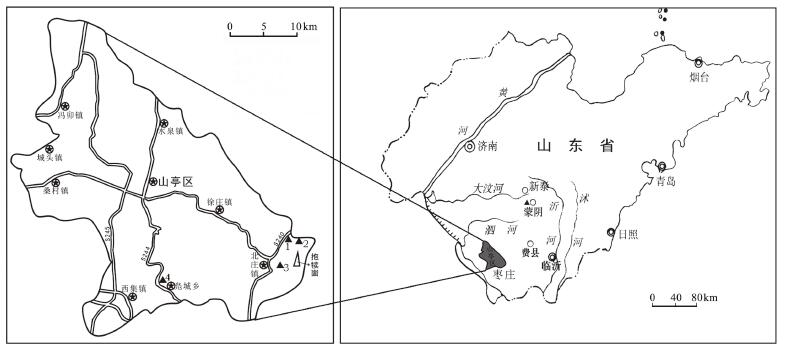

A preliminary report on a reconnaissance of Paleolithic sites in the Shanting District, Zaozhuang City
Received date: 2017-09-29
Revised date: 2017-12-14
Online published: 2020-08-31
In May 2016, a short survey of Shanting District, Zaozhuang City was carried out and two technological types of lithic assemblage were collected, including 161 stone artifacts. About one third of the artifacts were collected from in situ positions within the stratigraphy and two thirds from surface. Four Paleolithic localities with clear stratigraphy were discovered at the foot of the mountain. The stone artifacts of WMM (WYZ, MW, MT) sites included flakes (n=30), chunks (n=25) and debitage (n=13), followed by cores (n=11), microblade cores (n =5) and retouched items (n=3). Raw materials are primarily quartz and chert. Fangshan site (FS) included flakes (n=21), debitage (n=15), cores (n=14), followed by chunks (n=12) and retouched items (n=12). All raw material was quartz derived from local sources, and all raw material at the four locations derived from outcrops of mountain rock around the sites. The stone artifacts from the WMM sites were buried in a similar layer of cinnamon soil. These included microblade cores, similar to components of microblade technology in the Yishuhe River Basin in southeast Shandong Province. Hard hammer percussion was the main flaking technique,followed by bipolar technique. Retouched tools are small in number and include a notch, a burin, and an end-scraper manufactured on flakes. Stratigraphic observations and the absolute age of the known lithic assemblage in Yishuhe River Basin suggest that these three newly discovered localities belong to the late Pleistocene. FS site shows strong characteristics of the bi-polar flaking technique. The retouched tool assemblage includes notches and scrapers. The geological age of the site by stratigraphic observations is speculated to be late Pleistocene.

Key words: Shanting District; Zaozhuang City; Paleolithic; Microblade cores; Bipolar technique
Gang LI , Yapeng REN , Meng LI . A preliminary report on a reconnaissance of Paleolithic sites in the Shanting District, Zaozhuang City[J]. Acta Anthropologica Sinica, 2020 , 39(03) : 357 -366 . DOI: 10.16359/j.cnki.cn11-1963/q.2019.0004
| [1] | 安仰生, 张旭, 孙茂田, 等. 鲁中南岱崮地貌的成因及演化——以抱犊崮为例解析[J]. 山东国土资源, 2010(2):9-11, 14 |
| [2] | 毛家衢. 第一章:地层综述[J]. 山东地质, 1987(2):29-31 |
| [3] | 卫奇. 石制品观察格式探讨[A]. 邓涛、王原主编. 第八届中国古脊椎动物学学术年会论文集[C]. 北京: 海洋出版社, 2001: 209-218 |
| [4] | 中国社会科学院考古研究所. 山东汶、泗流域发现的一批细石器[J]. 考古, 1993(8):673-708 |
| [5] | 临沂地区文物管理委员会. 山东临沂县凤凰岭发现细石器[J]. 考古, 1983(5):385-388 |
| [6] | 山东省文物考古研究所等. 山东郯城马陵山细石器遗存调查报告[J]. 史前研究, 1987(1):44 |
| [7] | 潘守永, 伍晴晴. 用考古学的眼光回望过去——解读台儿庄古城的文化历史环境[J]. 中华民居, 2012(2):22-35 |
| [8] | 谢飞, 成胜泉. 河北阳原油房细石器发掘报告[J]. 人类学学报, 1989(1):59-68 |
| [9] | 李罡, 任雪岩, 李珺. 泥河湾盆地二道梁旧石器时代晚期遗址发掘简报[J]. 人类学学报, 2016(4):509-521 |
| [10] | 谢飞. 河北旧石器时代晚期细石器遗存的分布及在华北马蹄形分布带中的位置[J]. 文物春秋, 2000(2):15-25, 29 |
| [11] | 李罡, 任雅鹏. 沂、沭河流域的细石器遗存及其工艺技术研究[A].山东省文物考古研究所著,海岱考古[C]. 北京: 科学出版社, 2015: 417-436 |
/
| 〈 |
|
〉 |